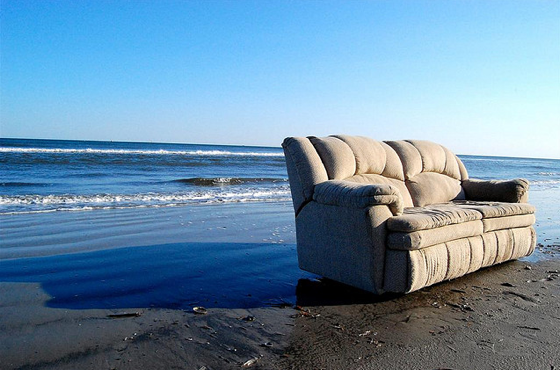The Nature of Work and the Workplace
The Final Report from the CRE&FM Futures Forum, put out last year by Zurich Insurance
Group, identified several trends likely to affect the nature of work and the workplace of the future:
- The workplace will continue a transition to being a social hub that is the physical manifestation of desired cultural and brand values, as well as a place of production.
- "The office" will remain the primary place to develop and maintain collaborative relationships, but such offices will increasingly be used for meetings rather than as a collection of workspaces for individuals.
- Knowledge-based businesses will be the ones that provide the autonomy and the enabling tools for workers to decide when, how and where their work is accomplished collectively and individually, on and off company premises.
- Rather than the legacy approach to space based on role or function, businesses will increasingly consolidate workplace concepts around activities-based and or competencies-based work models.
Source: fmlink
Micro Adaptive Reuse and the peer-to-peer revolution
 I am on a flight to San Francisco to attend Greenbuild. I am not staying at a hotel, opting instead to take the plunge into "couch surfing", a slightly less scary option than hostels. Okay, so I am not exactly couch surfing, but I am staying in someone else's home and sleeping in someone else's bed... still pretty creepy by many standards. I used a matching service called Airbnb. Similar to the old music peer-to-peer services like Kazaa or Napster, Airbnb connects individuals with a marketplace for non-traditional lodging alternatives. Unlike many file-sharing sites, this legitimate service will not have the feds knocking on your door! I am exploring this phenomena as a real estate solution that is based on the concept of adaptable reuse... on a much smaller scale.
I arrived in Oakland right on time and as a sustainable traveler, I took the Air BART to the BART to Powell Street Station. There I connected with my landlord, walked over to Mint Plaza and settled down with a cup of joe to wait. I did not have to wait long, as she arrived very quickly with the apartment keys. We walked upstairs and she showed me the basics, then left me with the key and a set of instructions. Easy peezy! I walked down a few blocks to Whole Foods and picked up groceries for the week. I feel right at home.
I am on a flight to San Francisco to attend Greenbuild. I am not staying at a hotel, opting instead to take the plunge into "couch surfing", a slightly less scary option than hostels. Okay, so I am not exactly couch surfing, but I am staying in someone else's home and sleeping in someone else's bed... still pretty creepy by many standards. I used a matching service called Airbnb. Similar to the old music peer-to-peer services like Kazaa or Napster, Airbnb connects individuals with a marketplace for non-traditional lodging alternatives. Unlike many file-sharing sites, this legitimate service will not have the feds knocking on your door! I am exploring this phenomena as a real estate solution that is based on the concept of adaptable reuse... on a much smaller scale.
I arrived in Oakland right on time and as a sustainable traveler, I took the Air BART to the BART to Powell Street Station. There I connected with my landlord, walked over to Mint Plaza and settled down with a cup of joe to wait. I did not have to wait long, as she arrived very quickly with the apartment keys. We walked upstairs and she showed me the basics, then left me with the key and a set of instructions. Easy peezy! I walked down a few blocks to Whole Foods and picked up groceries for the week. I feel right at home.
I have been here for two days now, and things are going great. I would suggest that if you go down this path for lodging, you be comfortable sleeping in someone else's bed and using another persons utensils All in all, I am happy with this choice and look forward to the rest of the trip and future "couch surfing" opportunities. If you want to branch out on your own travels, here are a few sources to get you started.
- Airbnb: an obvious choice, given the mention in this article. Airbnb is easily accessible on the web and through an app on your mobile device through the iOS or Android app stores.
- VRBO: Vacation Rentals By Owner (VRBO) is a site that I have used in the past. From impromptu trips to Europe to local accommodations for visiting family members, VRBO has been a solid experience.
- Homeaway: Like VRBO (and co-owned), Homeaway offers vacation homes that provide travelers with hotel alternatives. The company also makes it easy for vacation rental owners and property managers to advertise their properties and manage bookings online.
- Flipkey: Similar to Homeaway and VRBO, Flipkey specializes in vacation homes. It is owned by Tripadvisor and provides user reviews and commercially managed properties, as well.
- Roomorama: Better for Europe and Asia stays, this is a good site for travelers headed abroad. 70 percent of the available properties are second homes that are handled by a management company. It also has features similar to Hipmunk, and allows owners to make offers based on ads from searchers. It also uses established security measures to raise the quality of experiences for both owners and renters.
"Net Zero Real Estate" or the 11th Commandment: "Thou Shall Not Grow"
 In a memo release on May 11, 2012, the President reinforced the policies laid out by Executive Order 13589 (November 9, 2011) and the June 10, 2010 Real Estate related Memorandum on disposing of unneeded Federal real estate, targeting $3B in cost savings by the end of FY2012. In essence, this latest directive provides insight into the expected outcomes of budget planning. It focuses on four areas for cost savings, including:
In a memo release on May 11, 2012, the President reinforced the policies laid out by Executive Order 13589 (November 9, 2011) and the June 10, 2010 Real Estate related Memorandum on disposing of unneeded Federal real estate, targeting $3B in cost savings by the end of FY2012. In essence, this latest directive provides insight into the expected outcomes of budget planning. It focuses on four areas for cost savings, including:
- Travel: spend 30% less than the FY2010 levels from FY2013 to FY2016.
- Conferences: conference expenses should be appropriate, necessary, and managed in a manner that minimizes expense to taxpayers.
- Real Estate: aggressively dispose of excess properties and make more efficient use of existing assets.
- Fleet: maintain a consistent acquisition and replacement schedule to save costs.
For our purposes, we will focus on real estate. The brief section in the memo reiterates the language from the June 2010 memo that led Agencies to establish a Cost Savings and Innovation Plan (often referred to as the CSIP, pronounced "SEE-sip"). In addition, the memo required that Agencies:
"shall not increase the size of their civilian real estate inventory, subject to exceptions as described below. Acquisition of new Federal building space ... that increases an agency's total square footage of civilian property must be offset through consolidation, co-location, or disposal of space from the inventory of that agency."
An important clarification to this requirement stated that Agencies can, in fact, construct that baseline inventory including the excess or disposed space from the June 2010 exercise. Expect a follow-up from OMB to help Agencies better understand the specific requirements for planning and implementation.
You can find the actual memo here:

